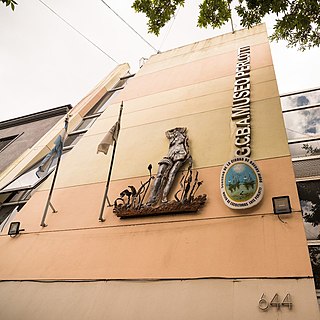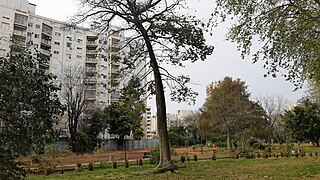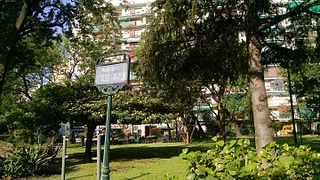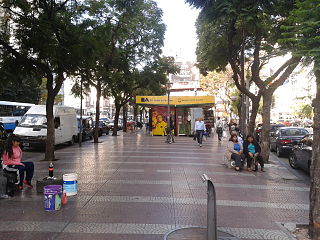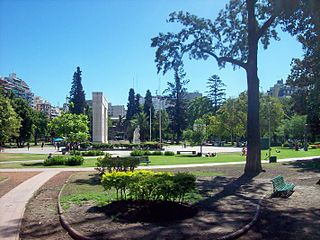Self-guided Sightseeing Tour #3 in Ciudad Autónoma de Buenos Aires, Argentina
Legend
Guided Free Walking Tours
Book free guided walking tours in Ciudad Autónoma de Buenos Aires.
Guided Sightseeing Tours
Book guided sightseeing tours and activities in Ciudad Autónoma de Buenos Aires.
Tour Facts
2.3 km
38 m
Experience Ciudad Autónoma de Buenos Aires in Argentina in a whole new way with our free self-guided sightseeing tour. This site not only offers you practical information and insider tips, but also a rich variety of activities and sights you shouldn't miss. Whether you love art and culture, want to explore historical sites or simply want to experience the vibrant atmosphere of a lively city - you'll find everything you need for your personal adventure here.
Individual Sights in Ciudad Autónoma de Buenos AiresSight 1: Museo de Esculturas Luis Perlotti
The Luis Perlotti Sculpture Museum is an art museum located on Pujol 644, Barrio de Caballito, Autonomous City of Buenos Aires. He has his name in tribute to the Argentine sculptor Luis Perlotti. Its mission is to preserve, disseminate and promote the production and reception of Argentine sculpture in general, and the homonymous artist in particular. Its heritage includes more than 1600 pieces, between drawings, paintings, engravings, murals and varied sculptural genres: wood sizes, marble and bronze sculptures, ceramics and reconstituted stone. Among them, the production of Perlotti stands out, characterized by its Americanist theme, works by great masters of national sculpture and two murals of the painter Benito Quinquela Martín. In addition, it has the donation of artists such as Lidia Battisti, Juan Carlos Ferraro, and Alfredo Yacussi.
Sight 2: Plaza Giordano Bruno
Giordano Bruno Square is a green space located in the Caballito neighborhood of the City of Buenos Aires, between the Sarmiento Railroad tracks and Rojas, Giordano Bruno, Neuquén, Parral and Bacacay streets. The vertex of the square between Parral and Giordano Bruno marks the origin of Avenida Honorio Pueyrredón.
Sight 3: Plazoleta Crisólogo Larralde
The Plazoleta Crisólogo Larralde is a green space in the Caballito neighborhood of the City of Buenos Aires.
Sight 4: Plaza Primera Junta
Primera Junta Square is a small square in the neighborhood of Caballito, Buenos Aires. It functions as a combination node between the homonymous subway station, several bus lines and the Caballito station of the Sarmiento Line, and is also a commercial area of such importance that the entire surrounding area is known as Primera Junta.
Sight 5: La fuente de la doncella
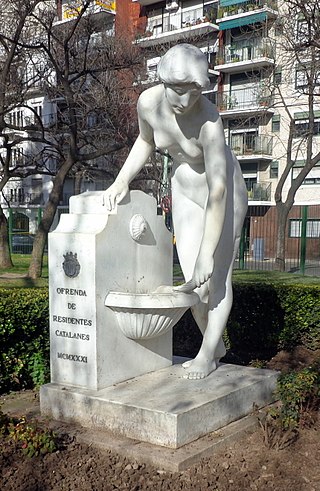
The Fountain of the Maiden, also known as the Catalan Fountain, is a sculpture made of white marble that represents, in life-size, a naked woman drawing water from a basin.
Sight 6: Parque Rivadavia
Rivadavia Park, originally known as Plaza Lezica because it was part of the Quinta Lezica, is a green public space that occupies an area of six hectares, located between Rivadavia Avenue and Doblas, Chaco, Rosario and Beauchef streets in the Caballito neighborhood of the city of Buenos Aires, which was created by Ordinance No. 2702 of the Municipality of the City of Buenos Aires. from July 10, 1928. Its designers were Carlos León Thays (Jr.) and Francisco Lavecchia.
Share
How likely are you to recommend us?
Disclaimer Please be aware of your surroundings and do not enter private property. We are not liable for any damages that occur during the tours.
GPX-Download For navigation apps and GPS devices you can download the tour as a GPX file.
